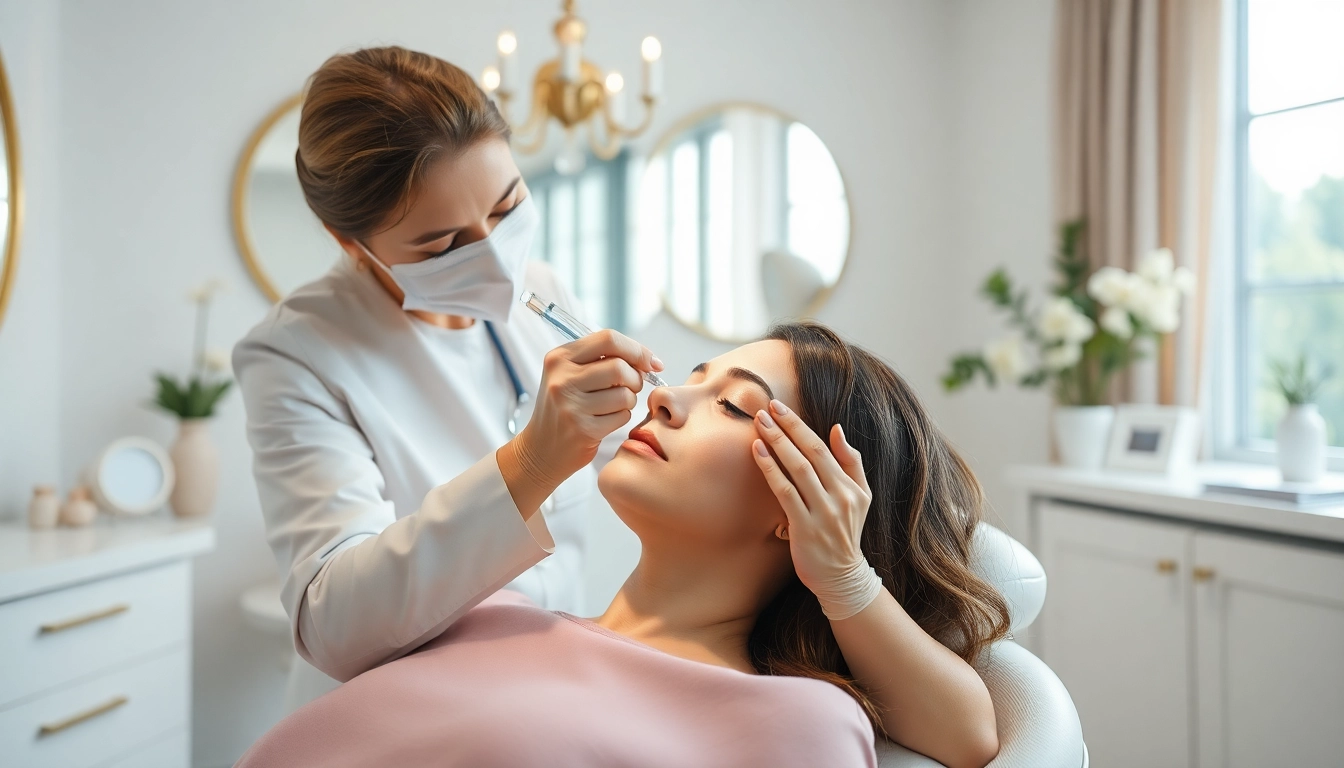Understanding Skin Tightening Options
As we age, our skin loses elasticity and firmness. For many individuals, this can lead to sagging skin and unwanted wrinkles, prompting a desire for skin tightening solutions. There are various methods available today, ranging from non-invasive procedures to topical applications and lifestyle changes. This article delves into these options and provides a comprehensive guide on how to enhance your skin’s appearance safely and effectively.
What is Skin Tightening?
Skin tightening refers to various procedures aimed at restoring the skin’s elasticity and firmness. It can involve both non-surgical and surgical techniques designed to improve the skin’s tone, reduce droopiness, and enhance overall texture. The underlying principle is often based on stimulating the production of collagen and elastin, two essential proteins vital for maintaining skin firmness.
Types of Skin Tightening Treatments
Skin tightening treatments can be grouped into two main categories: non-surgical and surgical options. Non-surgical methods are less invasive, involve minimal downtime, and can be completed in a doctor’s office. Surgical options, while more effective in some cases, come with higher risks and longer recovery times.
- Non-Surgical Treatments: Includes radiofrequency, ultrasound, and laser therapies.
- Surgical Treatments: Such as facelifts and body lifts typically performed under general anesthesia.
Benefits of Non-Surgical Approaches
Non-surgical skin tightening approaches present several advantages, including:
- Minimal to no downtime, allowing patients to return to regular activities immediately.
- Lower costs compared to surgical procedures.
- Fewer risks and side effects, leading to a safer experience.
- Cumulative effects, with many treatments yielding improved results over time.
- Variability in treatment options, making it easier for individuals to find a method that suits their needs.
Popular Skin Tightening Techniques
When exploring the world of skin tightening, various techniques can produce significant results. Here’s an overview of some of the most popular methods available:
Radiofrequency Treatments
Radiofrequency (RF) skin tightening is one of the leading non-invasive techniques. The procedure involves using electromagnetic waves to heat the deeper layers of the skin, stimulating collagen and elastin production.
- How it works: RF treatments typically involve taking an RF device that heats the tissue beneath the skin surface, leading to collagen remodeling. Over time, this helps rejuvenate the skin, resulting in a firmer appearance.
- Benefits: Quick treatment sessions, minimal discomfort, and a low risk of side effects are notable advantages. Many patients report a lifting effect following treatments.
- Examples of RF Treatments: Venus Freeze, Exilis, and Thermage.
Ultrasound Procedures
Ultrasound skin tightening utilizes sound waves to penetrate the skin layers, similarly stimulating collagen production.
- Mechanism: The ultrasound energy causes micro-damage to specific skin areas, prompting a healing response that leads to increased collagen deposition over time.
- Advantages: This method allows for precise treatment that can target different depths of the skin, contributing to an improved contour and skin texture.
- Popular Techniques: Ultherapy is a widely recognized ultrasound skin tightening procedure.
Laser Skin Tightening
Laser treatments have become a popular skin rejuvenation option, effectively tightening skin while reducing imperfections.
- How it functions: Lasers work by targeting specific skin layers, using light energy to promote collagen formation and enhance skin elasticity.
- Benefits: Laser treatments can also reduce wrinkles, improve skin tone, and address pigment issues, making them a versatile choice.
- Common Types: Fractional CO2 lasers, non-ablative lasers, and erbium lasers.
At-Home Skin Tightening Solutions
In addition to cosmetic procedures, there are several at-home solutions for those looking to improve skin tightness without professional intervention.
Choosing the Right Skin Tightening Cream
Many skincare products market themselves as skin-tightening creams or formulations.
- Ingredients to Look For: Products that contain retinoids, hyaluronic acid, peptides, and antioxidants like Vitamin C can promote skin firmness and elasticity.
- Application: Regular use is key—apply these formulations consistently to nurture and tighten the skin over time.
- Realistic Expectations: While they can aid in improving the skin’s appearance, results will generally be less dramatic than those achieved via professional treatments.
DIY Natural Remedies
Some individuals prefer natural approaches to enhance skin elasticity. Consider the following DIY remedies:
- Aloe Vera: Known for its hydrating properties, aloe can support skin elasticity when applied topically.
- Egg Whites: These can temporarily tighten the skin when applied as a mask due to their protein content.
- Coconut Oil: Rich in fatty acids, it hydrates the skin and helps maintain elasticity.
Building an Effective Routine
To gauge the effectiveness of at-home treatments:
- Consistency is Key: Allocate time for your skincare regimen. Daily moisturizing and incorporating specialized treatments can show cumulative benefits.
- Sunscreen Protection: Protecting your skin from UV rays prevents further skin damage, which is essential in any anti-aging skincare strategy.
- Hydration and Nutrition: Stay hydrated and consume a balanced diet rich in antioxidants to nourish the skin from within.
Preparing for a Professional Skin Tightening Session
If you opt for professional treatments, understanding what to expect can maximize your comfort and results.
What to Expect During a Treatment
During your initial consultation, the practitioner will assess your skin and recommend a tailored plan based on your concerns:
- Initial Assessment: They will evaluate your skin’s condition and discuss your objectives to determine the best method for your needs.
- Procedure Details: Most non-surgical options involve minimal discomfort, often likened to a rubber band snapping against the skin.
- Duration: Sessions can take from 30 minutes to an hour, depending on the treatment and area being addressed.
Aftercare Tips for Best Results
Following your treatment, adhering to aftercare guidelines can significantly impact results:
- Avoid Sun Exposure: Protect your skin from sun damage to avoid complications.
- Moisturize: Hydrating your skin post-treatment is crucial to promote healing and efficacy.
- Stay Hydrated: Drinking ample water supports skin health and recovery.
Common Misconceptions about Skin Tightening
Understanding the facts behind skin tightening can help dispel myths and promote informed decisions:
- Myth: Non-surgical methods are ineffective.
Fact: Many patients see significant improvements in skin tightness and texture with non-surgical treatments. - Myth: Instant results can be achieved.
Fact: While many non-invasive treatments show immediate effects, optimal results typically develop over weeks to months as collagen remodeling occurs.
Evaluating Results and Long-Term Care
Assessing outcomes post-treatment and practicing good skincare habits is essential for maintaining your results.
Assessing Treatment Efficacy
Evaluating the effectiveness of your chosen treatment involves several factors:
- Time Frame: Assess improvements over several weeks after treatment, as results may continue to evolve.
- Before and After Photos: Documenting progress visually offers a tangible reference.
- Consulting Professionals: Regular follow-ups with your skincare provider help gauge effectiveness and make necessary adjustments to your regimen.
Maintaining Firm Skin Over Time
Even after achieving desired results, it’s crucial to maintain skin health to ensure prolonged firmness:
- Regular Treatments: Depending on your treatment choice, periodic maintenance sessions may be recommended.
- Skincare Routine: Continue nourishing your skin with hydrators and antioxidants, adapted as per your skin’s changing needs.
- Healthy Lifestyle: A nutrient-rich diet, adequate sleep, and regular exercise contribute significantly to skin vitality.
When to Seek Professional Advice
Understanding when to consult a professional can lead to better skin outcomes. Consider the following:
- Persistent Concerns: If sagging skin persists despite at-home efforts, a professional consultation is warranted.
- Changes in Skin Appearance: Any unusual changes in your skin should be assessed by a dermatologist or skincare expert.
- Looking for New Options: If you’re considering a treatment, speaking with a professional ensures you receive tailored advice and know the latest options available.



